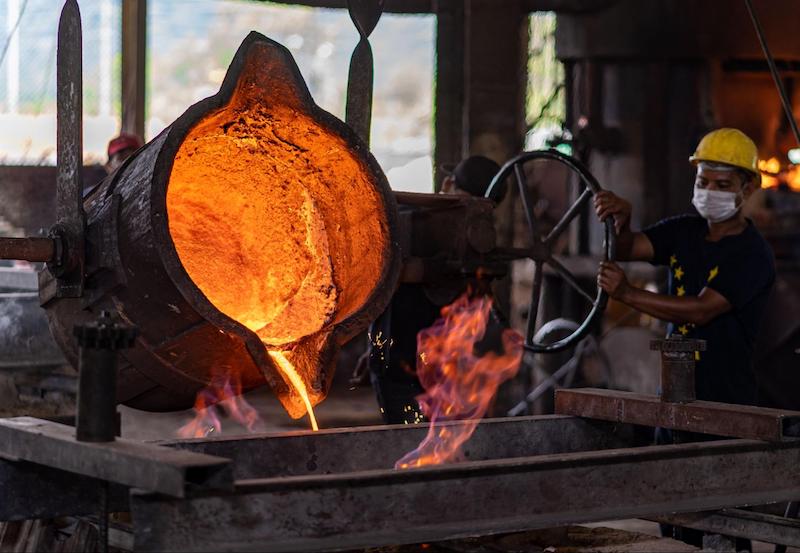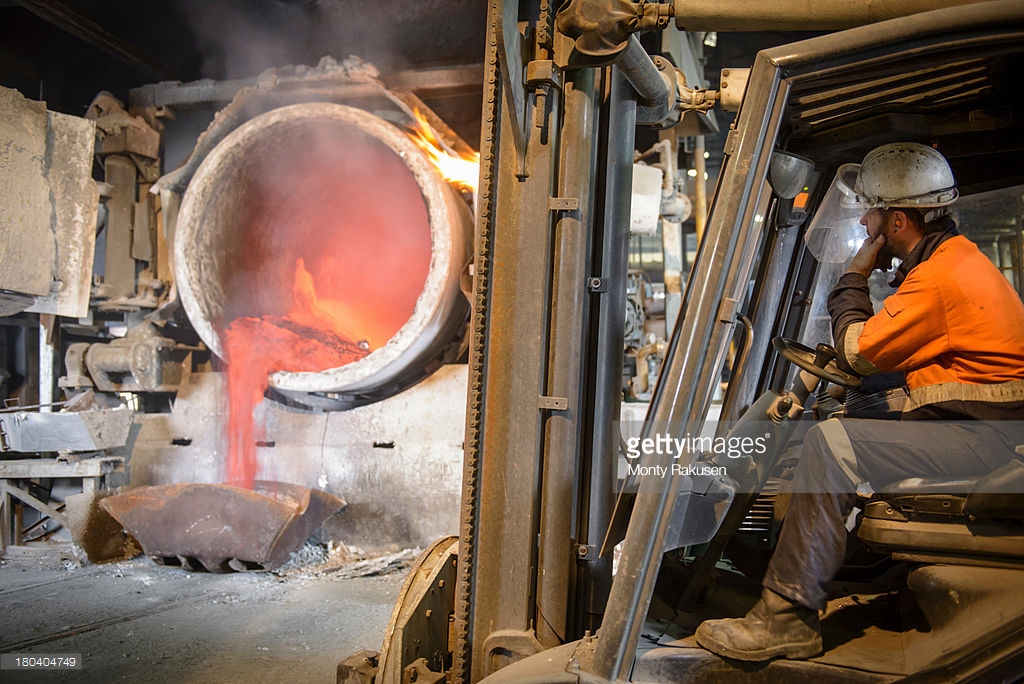The Ultimate Guide to Metal Castings and Their Long-Term Cost Benefits
Wiki Article

Understanding the Refine: How Aluminum Foundries Produce High-Quality Products
Aluminum foundries play a necessary duty in producing top notch items with a thorough procedure. It starts with melting raw aluminum, which removes pollutants. Afterward, various molding strategies shape the steel into wanted kinds. Accuracy during putting and solidification is essential to satisfy specific specs. The final stages include finishing touches that enhance toughness and look. As technology developments, these procedures are improved additionally. What advancements are forming the future of aluminum foundries?The Melting Process: Transforming Raw Aluminum
The melting procedure acts as an important step in changing raw aluminum right into functional items. Aluminum scrap or raw ingots are put in a furnace where they are subjected to high temperatures, commonly reaching around 660 degrees Celsius. This intense heat triggers the aluminum to melt, enabling impurities to climb to the surface area, where they can be skimmed off.Various melting techniques, such as induction melting or gas-fired melting, might be used depending on the specific requirements of the factory. The option of approach can influence power performance and metal quality. Maintaining specific temperature control is vital to guarantee consistent melting and to stay clear of oxidation that can compromise the material.
When melted, the aluminum is prepared for further handling, establishing the phase for succeeding operations that will certainly mold it into certain shapes and products. Aluminum Castings. The high quality of the melting process directly affects the integrity of the last aluminum things produced
Molding Strategies: Forming the Future
After the aluminum has actually been melted and pollutants got rid of, it is ready for shaping with different molding methods. Among one of the most widespread techniques is sand casting, where a mold and mildew is produced from sand and a binder. This technique permits for detailed styles and is affordable for reduced to medium production runs. An additional preferred technique is die spreading, which includes requiring liquified aluminum into a steel mold under high pressure. This technique causes high accuracy and smooth surfaces, making it optimal for mass manufacturing.
Permanent mold and mildew casting is also made use of, utilizing multiple-use molds that enhance dimensional precision and surface finish. Each molding method provides special benefits, enabling foundries to tailor their processes based on product specifications and manufacturing volume. By choosing the appropriate approach, aluminum foundries can guarantee superior top quality and performance in their last items, strengthening their role in various markets.
Putting and Solidification: The Art of Casting
Putting liquified aluminum right into molds notes a vital phase in the spreading procedure, where precision and timing are important - Aluminum Foundry. The shop group have to carefully control the temperature level of the aluminum to assure suitable fluidity, protecting against flaws such as porosity or cold shuts. As the steel is poured, it streams into the ins and outs of the mold and mildew, filling every cavity to develop the wanted shapeSolidification starts right away as the liquified aluminum cools and changes to a strong state. This stage is influenced by a number of factors, consisting of the mold material, density, and ambient temperature. The cooling rate must be taken care of to prevent stress and anxiety fractures or warping in the ended up product.
When strengthened, the aluminum takes on the precise dimensions and characteristics of the mold and mildew, setting the stage for subsequent handling. This putting and solidification procedure exhibits the delicate equilibrium of art and scientific research in aluminum casting, vital for creating premium products.
Ending Up Touches: Making Sure Top Quality and Accuracy
Ensuring top quality and precision in aluminum items needs meticulous focus to information throughout the finishing procedure. This stage entails various methods targeted at boosting the surface area characteristics and dimensional precision of the actors elements. Common methods consist of machining, surface treatment, and sprucing up. Machining fixes any dimensional inconsistencies and achieves the wanted resistances, while surface treatments, such as anodizing or powder finishing, offer rust resistance and enhance aesthetic allure.Sprucing up eliminates surface flaws, resulting in a smooth surface that fulfills rigid requirements. blog Quality control is vital; each finished item undertakes rigorous inspection to recognize any flaws. Advanced gauging tools, like coordinate measuring makers (CMM), are often utilized to guarantee compliance with layout requirements. Additionally, experienced professionals play a crucial duty, bringing experience and expertise to recognize problems that Related Site devices might forget. This comprehensive finishing procedure ultimately guarantees that the aluminum items fulfill customer expectations for high quality and performance.
Advancements in Aluminum Foundry Modern Technology
The quest of high quality and accuracy in aluminum items has brought about significant developments in foundry modern technology. Innovations such as robot automation have structured procedures, boosting efficiency and reducing human mistake. These robots are now with the ability of carrying out complicated jobs, including accurate mold and mildew handling and product pouring, which ensures constant item quality.On top of that, the integration of computer mathematical control (CNC) devices has actually reinvented machining operations, permitting complex designs and tighter tolerances. Advanced simulation software application promotes far better procedure planning by optimizing and forecasting potential issues steel flow. Additionally, the adoption of eco friendly methods, such as recycling aluminum scrap and using low-emission furnaces, has boosted sustainability in the market.

Frequently Asked Concerns
What Sorts Of Aluminum Alloys Are Commonly Utilized in Factories?
Typically utilized aluminum alloys in foundries consist of 356, 319, and 413. These alloys are understood for their outstanding casting homes, mechanical toughness, and resistance to rust, making them ideal for a large variety of applications.Exactly How Do Foundries Ensure Environmental Sustainability in Their Processes?
Factories carry out ecological sustainability by reusing aluminum scrap, optimizing energy performance, minimizing exhausts, utilizing environmentally friendly products, and adhering to regulatory requirements, consequently minimizing their eco-friendly impact while maintaining production top quality and performance.What Precaution Are Executed in Aluminum Foundries?
Aluminum foundries implement different security steps, consisting of individual safety equipment, ventilation systems, routine safety training, emergency situation response methods, and equipment upkeep checks. These practices aim to lessen hazards and ensure the health of all workers involved.Exactly How Do Foundries Deal With Defects in Cast Products?
Foundries address issues in actors products by utilizing strenuous evaluation methods, including visual checks and non-destructive testing. When issues are determined, they might rework or scrap products, making sure adherence to quality criteria and customer specifications.What Is the Normal Preparation for Aluminum Casting Projects?
The regular lead time for aluminum casting projects ranges from a few weeks to numerous months. Factors affecting this timeline consist of design navigate to this site complexity, manufacturing quantity, and the schedule of materials, which differ substantially across different foundries.Aluminum foundries play an important function in creating top quality items with a careful procedure. Wisconsin Aluminum Foundry. The shop team should meticulously regulate the temperature level of the aluminum to assure optimal fluidity, stopping issues such as porosity or cool shuts. The pursuit of top quality and precision in aluminum products has led to considerable improvements in shop technology. Typically utilized aluminum alloys in foundries include 356, 319, and 413. Aluminum foundries apply different safety actions, consisting of personal protective tools, ventilation systems, regular security training, emergency action protocols, and equipment upkeep checks
Report this wiki page